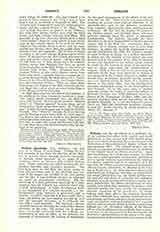

Prelate, real, the incumbent of a prelature, i.e., of an ecclesiastical office with special and stable jurisdiction in foro externo and with special precedence over other ecclesiastical offices; or, honorary, with distinctions of this ecclesiastical dignity without the corresponding office. The original prelates are the bishops as possessors of jurisdiction over the members of the Church based on Divine institution. Apart from the bishops, the real prelates include: (I) those who have quasi-episcopal, independent jurisdiction over a special territory separated from the territory of a diocese (praelatus nullius, sc. diaeceseos), as is the case with the abbeys and provostships of monasteries (Monte Cassino, Einsiedeln, St. Maurice in the Canton of Wallis, etc.); (2) those who have offices in the administration of dioceses, and enjoy an independent and proper jurisdiction (e.g., the earlier archdeacons, the provosts and deans of cathedral and collegiate churches, in so far as these still exercise a regular, personal jurisdiction; (3) abbots and provosts of monasteries, even when they administer no territory with episcopal powers, but have merely the permanent, supreme distinction of the monastery; (4) titular bishops, both those who in the vicariates Apostolic and other territories have supreme ecclesiastical administration, and those who have simply received episcopal consecration without jurisdiction over a special district, such as certain officials in Rome, consecrating bishops, etc.; (5) the highest officials of the Roman offices, who, in addition to the cardinals, have a prominent share in the direction of the Roman Church, and thus have a special relation to the person of the pope. In consequence of the extent of the government of the Church, prelates are especially numerous in Rome. The most important real prelates of the papal curia are: the three highest officials of the Camera Apostolica (vice-camerlengo, general auditor, and treasurer) and the Majordomo of the Vatican, who are called prelati di fiocchetti; the secretaries of the congregations of cardinals, the regent of the papal chancery, the regent of the Apostolic Penitentiary, and certain other high officials of the congregations of the Curia; the members of the College of Prothonotaries Apostolic de numero participantium, the auditors of the Rota, the clerics of the Apostolic Chamber, the referendaries of the Signatura justitice. In the Constitution “Inter ceteras” of June 11, 1659, Alexander VII laid down the conditions under which these real prelatures might be accepted. The dignity granted by the pope with mention of these conditions is called “praelatura justitiae”; when the conditions are not imposed in the granting of the dignity, the latter is called “praelatura gratis.”. To the real prelates belong, therefore, although no jurisdiction in Toro extern is attached to their offices, all the highest palace officials, who perform a constant service in the retinue of the pope and in the offices created for that purpose. The appointment to these offices confers of itself the prelature. Such officials are the Papal Almoner, the Secretary of Latin Briefs and Briefs to the Princes, the substitute of the Cardinal Secretary of State, the four real Privy Chamberlains, the real Privy Chaplains of the Pope.
A second class of prelates are those on whom the title and rank of the prelature are conferred with the corresponding dress and privileges, but without the office or court service otherwise attached to it. These are: (I) the prothonotaries Apostolic other than the real ones (see Prothonotary Apostolic); (2) the papal domestic prelates (Antistes urbanus, Praelatus urbanus, Praelatus domesticus), who are appointed to this dignity by papal Brief. They have the right of wearing the garb of a prelate and of using in Solemn High Mass the special candle (palmatoria), but not the other episcopal insignia (Motu Proprio “Inter multiplices” of Pius X, February 21, 1905, in “Acta S. Sedis”, XXXVII, 491, sq.); (3) the supernumerary privy chamberlains (Camerieri segreti sopra-numerarii), honorary chamberlains and chaplains, who may on special occasions wear the same garb as the officiating chamberlains of the pope. All prelates have the title “Monsignore” and a special costume (purple) corresponding to their rank; the higher prelates enjoy in addition other special privileges.
J. P. KIRSCH

